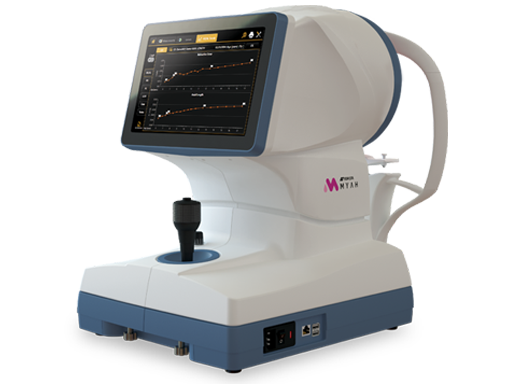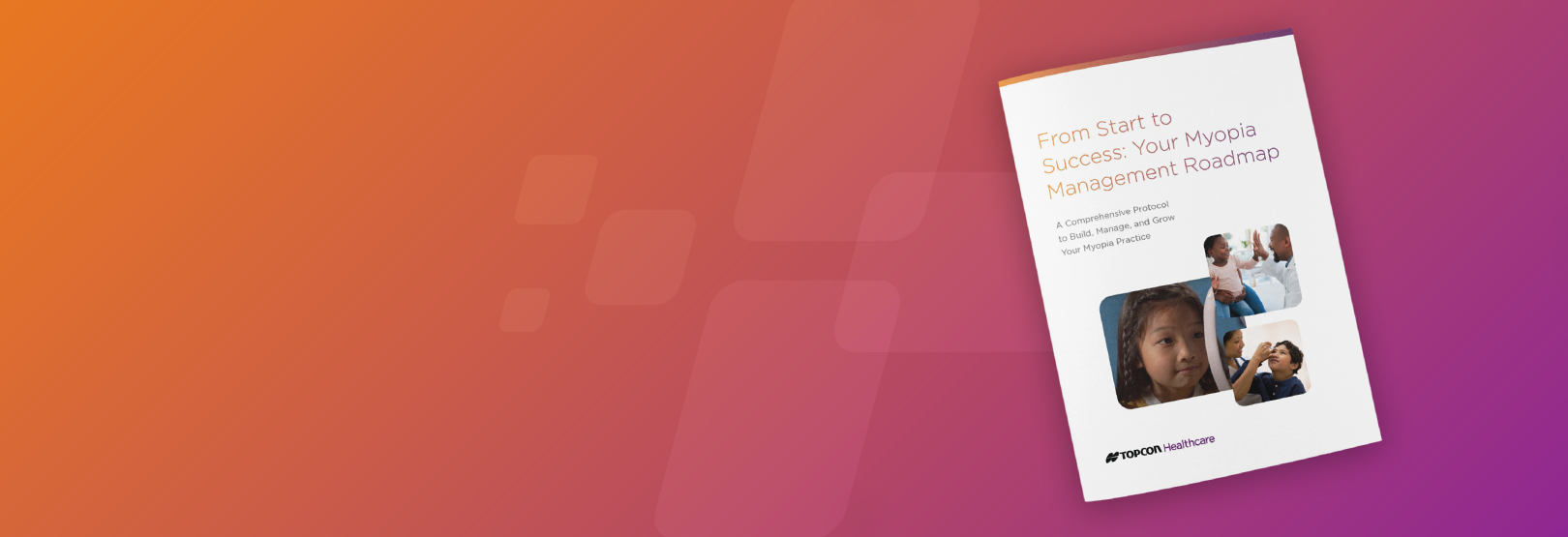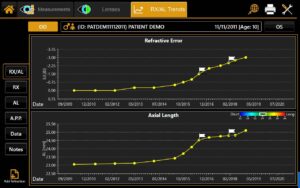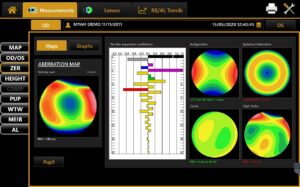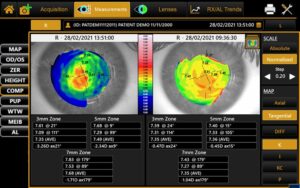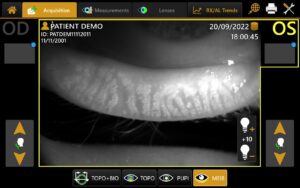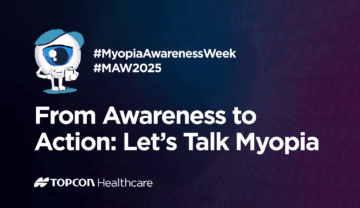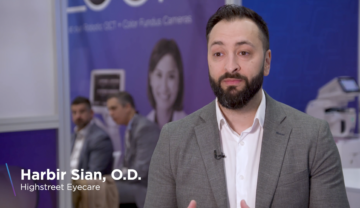Watch this quick MYAH demo
Product Features
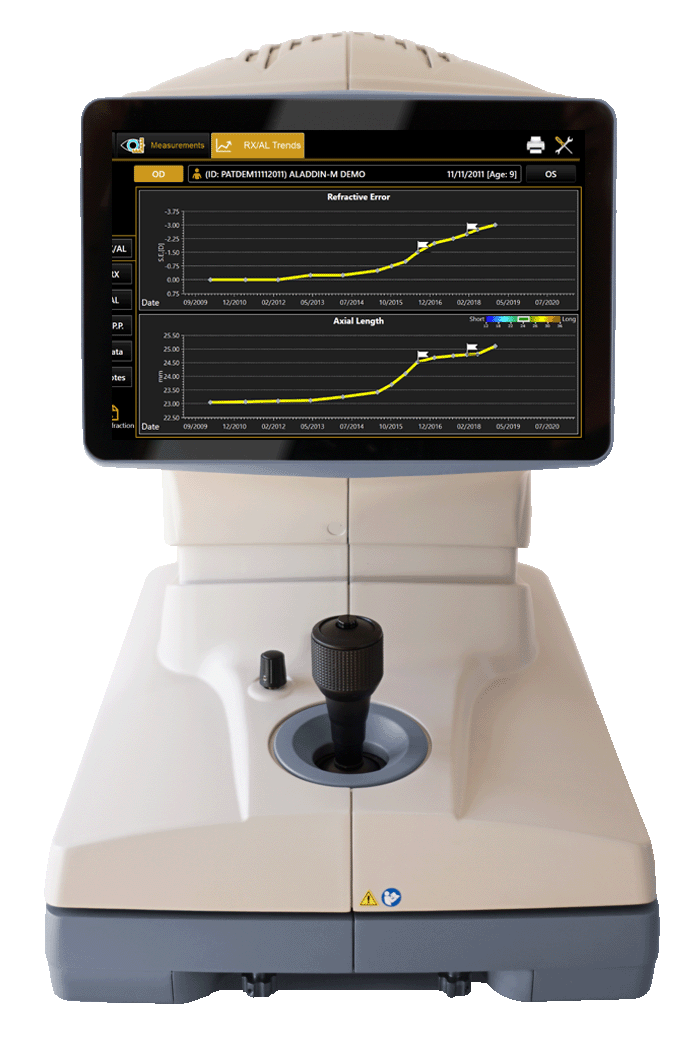
One easy-to-use instrument gives you a wealth of information to help you build your myopia management and specialty contact lens practice.
MYAH in Clinical Practice
Key Features
- OPTICAL BIOMETRY – Highly accurate, repeatable, and non-invasive method for tracking axial length.
- TOPOGRAPHY – Corneal topography with visit-to-visit comparison and white-to-white measurements.
- MEIBOGRAPHY – Visualize and capture images of the meibomian glands.
- PUPIL ASSESSMENT – Dynamic pupillometry assesses size and light reflexes of the pupil.
- LENS FITTING – Contact lens fitting tools including database of conventional RGP, Ortho-K lenses, and fluorescein simulation.
- ABERROMETRY MAPS – Simulate the effects of higher-order aberrations on visual quality.
- USER-FRIENDLY – Compact and easy to operate.
- EASILY REVIEW DATA – Access patient data on any connected PC in your network.
Ready to learn more?

Contact us today
| MYAH SPECIFICATIONS | |
| Keratoscopic Cone | 24 rings equally distributed on a 43 D sphere |
| Analyzed Points | Over 100,000 |
| Measured Points | Over 6,000 |
| Corneal Coverage | Up to 9.8 mm on a sphere of radius 8.00 mm (42.2 diopters with n=1.3375) |
| Diopter Power Range | 28.00 – 67.50 D |
| Display Resolution | 0.01 D, 0.01 mm |
| Axial Biometry | Low-Coherence Interferometry (LCI) on optical fiber (SLED @ 820 nm) |
| Capture System | Guided-focus |
| Monitor | LCD 10.1 inch capacitive touch screen |
| Database | Internal |
| Pupillometry | Dynamic, Photopic, Mesopic, Scotopic |
| Reports | Corneal map, Comparison map, Contact lens, Height map, Zernike analysis, Pupillometry, Rx/AL Trend analysis |
| Working Evironment | 10 °C – 40 °C, Relative humidity 8 – 75% (no condensing), Atmospheric pressure 800 – 1060 hPa |
| Power Supply | AC 100 – 240 V 50/60 Hz |
| Power Consumption | 100 VA |
| Dimensions / Weight | 320 mm (W) x 490 mm (H) x 470 mm (L), 18 Kg |
| Printing Options | USB printer, Network printer, PDF on network shared folder, PDF on USB PDF or Image on network folder or on USB |
| Operating System | Windows 10 64-bit |
| RAM | 4 GB |
| Hard Disk | 500 GB |
| External Connections | LAN integrated, 2x USB |
| INFORMATION ON MEASUREMENTS | |
| Keratometry | Radius of curvature – Measuring Range: 5.00 – 12.00 mm, Display Resolution: 0.01mm, In Vivo Repeatability: ±0.02 mm |
| Keratometry | Curve Radius in Diopter (D) (n=1.3375) – Measuring Range: 28.00 – 67.50 D, Display Resolution: 0.01 D, In Vivo Repeatability: ±0.12 D |
| Axial Lengh | Measuring Range: 15.00 – 36.00 mm, Display Resolution: 0.01mm, In Vivo Repeatability: ±0.03 mm |
| Pupil Dimension | Measuring Range: 0.50 – 10.00 mm, Display Resolution: 0.01mm |
| Limbus (White-to-White) | Measuring Range: 8.00 – 14.00 mm, Display Resolution: 0.01mm, In Vivo Repeatability: ±0.05 mm |

